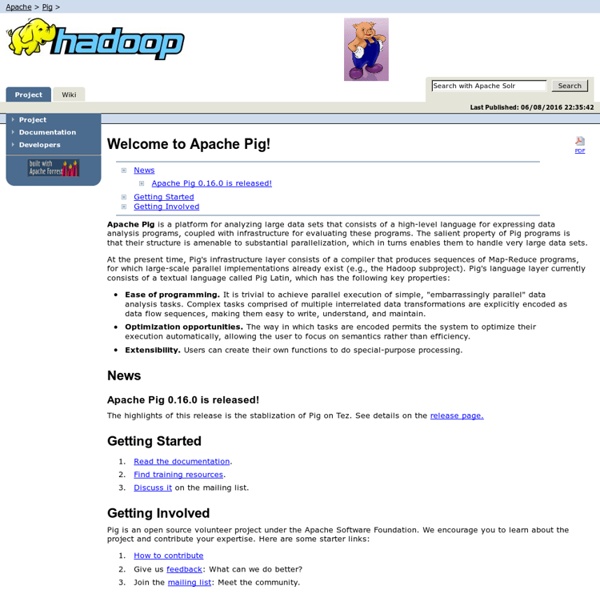Welcome to Apache Pig!

Tez -
Apache Hive TM
Home
Research Publication: Sawzall
Interpreting the Data: Parallel Analysis with Sawzall Rob Pike, Sean Dorward, Robert Griesemer, Sean Quinlan Abstract Very large data sets often have a flat but regular structure and span multiple disks and machines. Examples include telephone call records, network logs, and web document repositories. We present a system for automating such analyses. Published in:Scientific Programming Journal Special Issue on Grids and Worldwide Computing Programming Models and Infrastructure 13:4, pp. 227-298. Download: PDF Version URL (Final): Journal link Animation: The paper references this movie showing how the distribution of requests to google.com around the world changed through the day on August 14, 2003.
Apache ZooKeeper - Home
HBase – Apache HBase Home
Groovy - Home
Home » OpenStack Open Source Cloud Computing Software
For fast, interactive Hadoop queries, Drill may be the answer — Cloud Computing News
Welcome to Apache™ Hadoop®!
Related:
Related:




A platform for analyzing large data sets that consists of a high-level language for expressing data analysis programs, coupled with infrastructure for evaluating these programs by sergeykucherov Jul 15